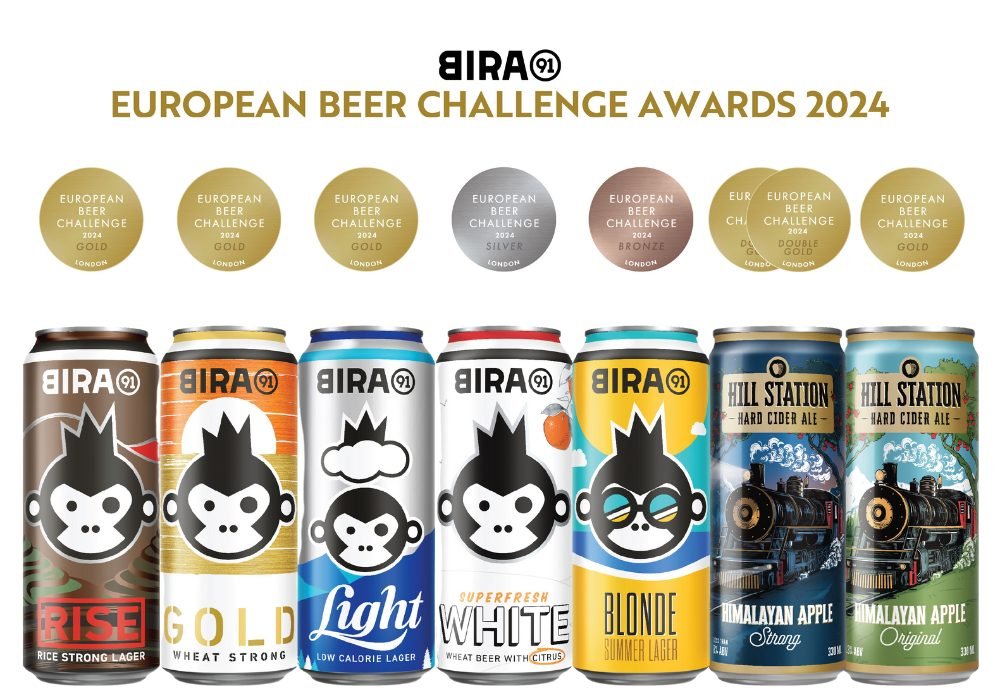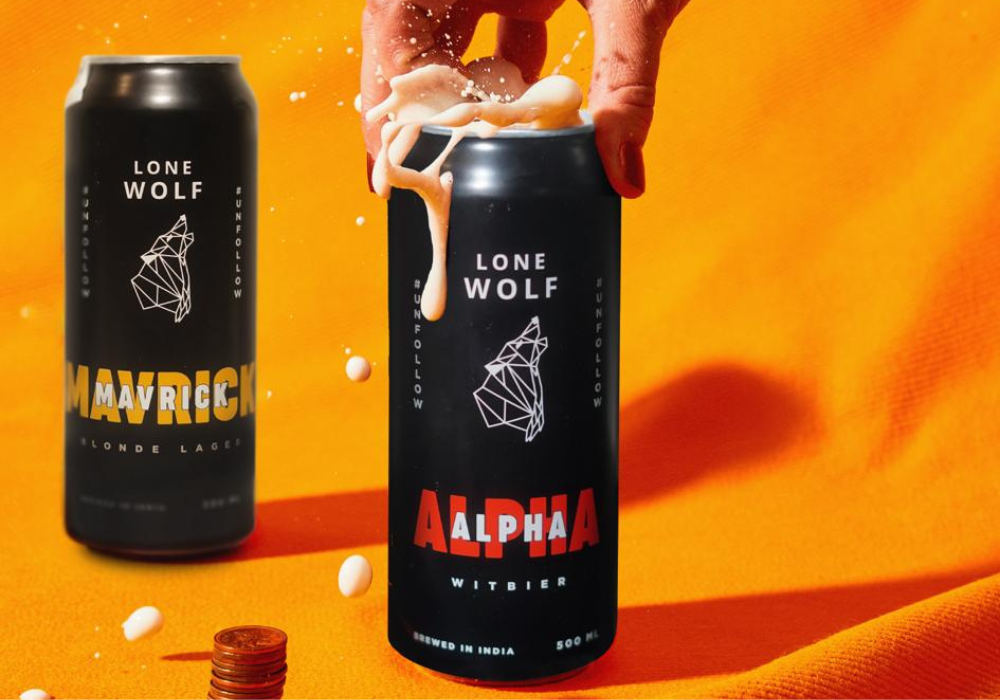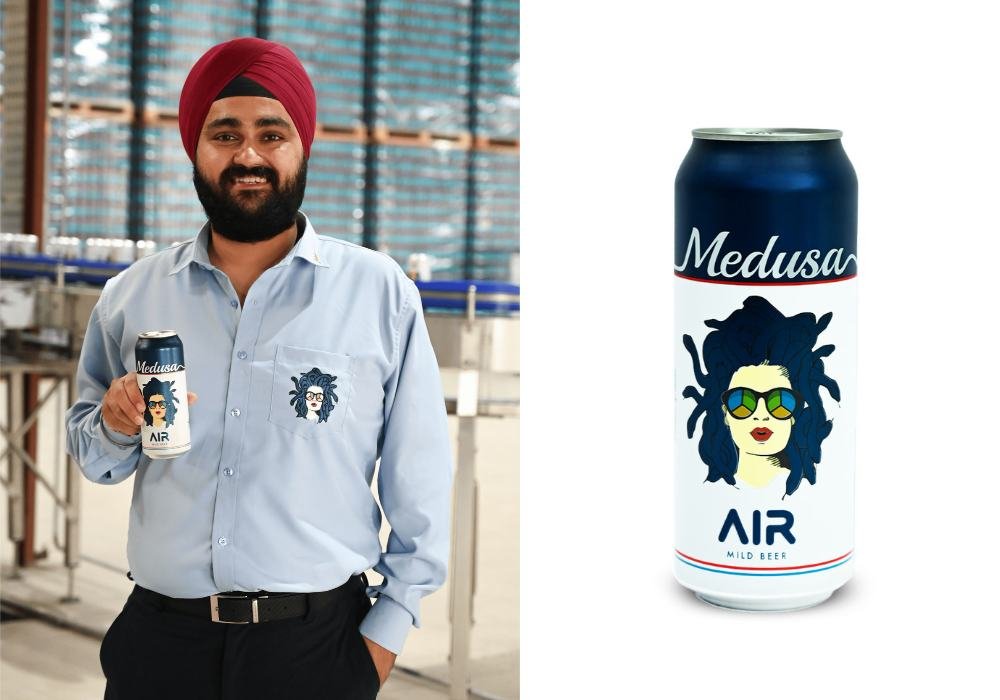Every head has a history

Chatty Girija
Beer Versatilist
We are all christened with names representing ancestors, time, place of origin, objects, and prominent personalities or by just for the trend of it.
The same principal applies for beer. Every beer worth its ABV carries a history, visual tradition name resonating its type, style and purpose. Needless to say, a brand book tags along like a lifetime astrology chart.
Without wasting time, let’s nose dive into the aromas of the world’s most popular and legendary beer brands from the greatest beer born countries and read the untold stories behind their labels.
Guinness Beer: Black is the still the new Black
Beer type: Stout
Country of origin: Ireland
 BEFORE
BEFORE
 AFTER
AFTER
Crafted since 1759 in Ireland, the beer is naturally named after the legendary brewer and the founding founder-Arthur Guinness.
The Guinness logo is visually represented by the ‘Brian Boru’ harp, a powerful symbol of Ireland’s national identity and heritage. The harp device has been synonymous with Guinness since 1862 when it was used on the first bottle label for GUINNESS® and makes up for the three elements in the GUINNESS® livery. The other two include the GUINNESS® word and Arthur Guinness’s famous signature. The harp is also the official national emblem of the Republic of Ireland and is noticeable on the Republic’s coinage. To maintain a distinct identity, the Irish Free State Government of 1922 had to turn the official government harp the other way to differentiate between the trademarked Guinness harp and the official State emblem.
In 2016, the logo once again fine-tuned its strings with a hand-drawn typography for the new word mark reflecting the craft that goes into creating the distinctive beers that Guinness is known for. The new harp is now revolutionary progress of the original brand mark – a contemporary take on the brand’s heritage. The ‘Estd. 1759’ text has a far-sharper looking harp, with a slight change to the font used for ‘Guinness’ itself.
Like the dark colour of the beer, the logo and the packaging is dominated by black to seamlessly mash with the product colour, personality and character.
A soap maker, Anheuser became a brewer after making an unwise, $90,000 loan to the struggling Bavarian Brewery. In 1860, after the company went bankrupt, Anheuser bought out other creditors and took over the brew house and cellars at Eighth and Pestalozzi streets. The company struggled for a decade, until Anheuser took on his son-in-law as partner.
The “King of Beers” was named Budweiser by paying homage to the beer makers of a Czech town called Ceske Budejovice, known in Anheuser’s native Germany as “Budweis.” According to the folks in Budweis, their local beer has been known as Budweiser for several hundred years.
Atleast since 1907, the Budweiser brand is carrying a big head of disputes with German and Czech brewers over the use of the name “Budweiser.” Czech brewer Budejovicky Budvar claims the Budweiser name is for them to use, and it markets a beer called Budweiser Budvar. Today what Americans think of as Budweiser is sold as Bud. When Budweiser Budvar made its way to American shores in 2001, it adopted the name “Czechvar.”
Budweiser: The King has fought many battles
Beer type: IPA
Place of birth: Born in Bavaria-Germany, Patriotic in America
 BEFORE
BEFORE
 AFTER
AFTER
Budding a new look
While it fought legal battles for its name ownership, it went through few makeovers on the look and lettering front too. Devoid of any frills, the logo letters are now crisp and curvaceous with the “B” standing out beautifully instead of being jammed into the bow tie shape, and look neater as a single-line stroke. The “King of Beers” tagline has changed from the overused Bank Gothic to something custom and glorious. The colors of the Budweiser logo feature a bright red, a crisp white, and tinges of gold. The bright red colour allows the logo to be easily noticed and recognised from a distance.
Studies have also shown that the color red causes a person’s appetite to be stimulated, which plays to the advantage of Budweiser. The white in the log conveys an idea of purity and cleanliness and the tinge of gold plays in to Budweiser’s image of sophistication and royalty.
Together, the red and white colors combine to convey a sense of American heritage and patriotism – something Budweiser has long used in the themes for their marketing campaigns.
Weihenstephaner began as a Benedictine abbey in 725 over a thousand years ago! St Corbinian(Korbinian) laid the first stones with 12 companions and brewing began in 768. It wasn’t until 1040 that Abbot Arnold was officially permitted to brew and to sell Weihenstephan beer from the city of Freising. The official decree has been disputed, but it is certain that by the time the Bavarian beer purity law was put into place in 1516, Weihenstephaner had already been brewing for years. Amidst all of these changes, the brewery also underwent several periods of destruction and rebuilding. Invasions by the Hungarians, Swedes, French and Austrians, fires, three plague epidemics and even an earthquake in 1348 rocked the brewery. Yet the brewing never stopped. Thank God for it!
The Weihenstephaner Vitus won in all classes and thus received the title of “world’s best beer”. In addition, the popular wheat bock beer came top in three further categories. Honours were also bestowed on the “Dark Wheat Beer”, which was crowned “World’s Best Dark Wheat Beer” and “Europe’s Best Dark Wheat Beer”.
Weihenstephan: The oldest and the best
Beer type: Pale lagers & Wheat beers
Place of birth: Bavaria, Germany

The logo legacy
In 1921 the brewery got its name: Bavarian State Brewery Weihenstephan and since 1923 it has used the Great Seal of the Bavarian State as its corporate logo.
Weihenstephan Monastery Brewery – after nearly a thousand years – still stands upon the Weihenstephan Hill, proud of its quality, state-of-the-art science and its tradition and conscious of its position as the oldest existing brewery in the world.
The Duvel Moortgat Brewery was founded in 1871 by Jan-Leonard Moortgat, who was descended from a family of brewers that lived in Steenhuffel, Belgium.
To commemorate the end of World War I, the Moortgats named their main beer Victory Ale. In the 1920s, an avid drinker described the beer as “nen echten duvel” (a real devil in Brabantian Dutch) – perhaps in reference to its formidable alcohol content (8.5% ABV) – and since then the name of the beer was changed to Duvel. Considered by many the definitive version of the Belgian Strong Pale Ale style, Duvel is brewed with Pilsner malt and dextrose, and hopped with Saaz hops and Styrian Goldings, the yeast still stems from the original culture of Scottish yeast bought by Albert Moortgat during a business tour of the U.K. just after World War I.
Today, the fourth generation of the Moortgat family watches over the legacy of founder Jan-Leonard Moortgat and his two sons, Albert and Victor.
Duvel: The original recipe
Beer type: Pilsner
Place of birth: Belgian
BEFORE
AFTER
The Class of Glass
 The Duvel glass, created in the late 1960s, was the first tulip-shaped tasting glass. Among other things, the new glass had to be able to take a full 33 cl bottle. Until then, there were no beer glasses of this format. The glass is designed specifically to ensure a more complete beer experience: the spherical shape releases the heavenly flavour and aroma of Duvel to full effect.
The Duvel glass, created in the late 1960s, was the first tulip-shaped tasting glass. Among other things, the new glass had to be able to take a full 33 cl bottle. Until then, there were no beer glasses of this format. The glass is designed specifically to ensure a more complete beer experience: the spherical shape releases the heavenly flavour and aroma of Duvel to full effect.
Is the Devil a Devell?
If you’re in the US, you order a DOO-vell. If you’re in Belgium, ask for a DOO-vill. And if you’re anywhere else, select one pronunciation or point to the image on the menu.
The history of Duvel Moortgat is one of respect for tradition and family values and continues to hold its head with pride.
Next time beer reaches your taste buds; always remember you are inhaling the artistry of aromas, the taste of tradition, the finery of flavours playing as ingredients to brew a mouth feel of magic worth calling beer.
Beer brands pass through time to offer beer lovers a timeless taste. Cheers!!!





